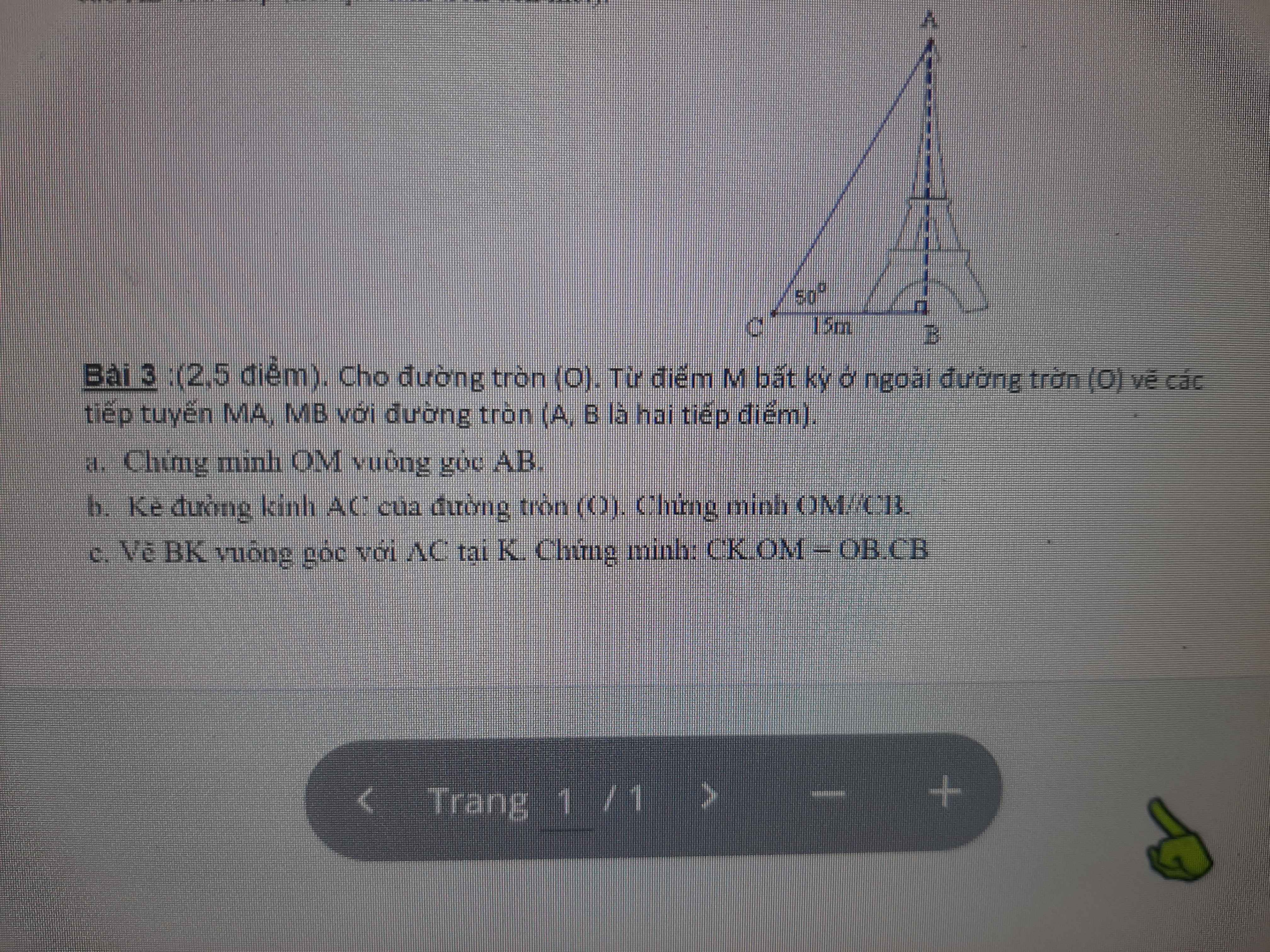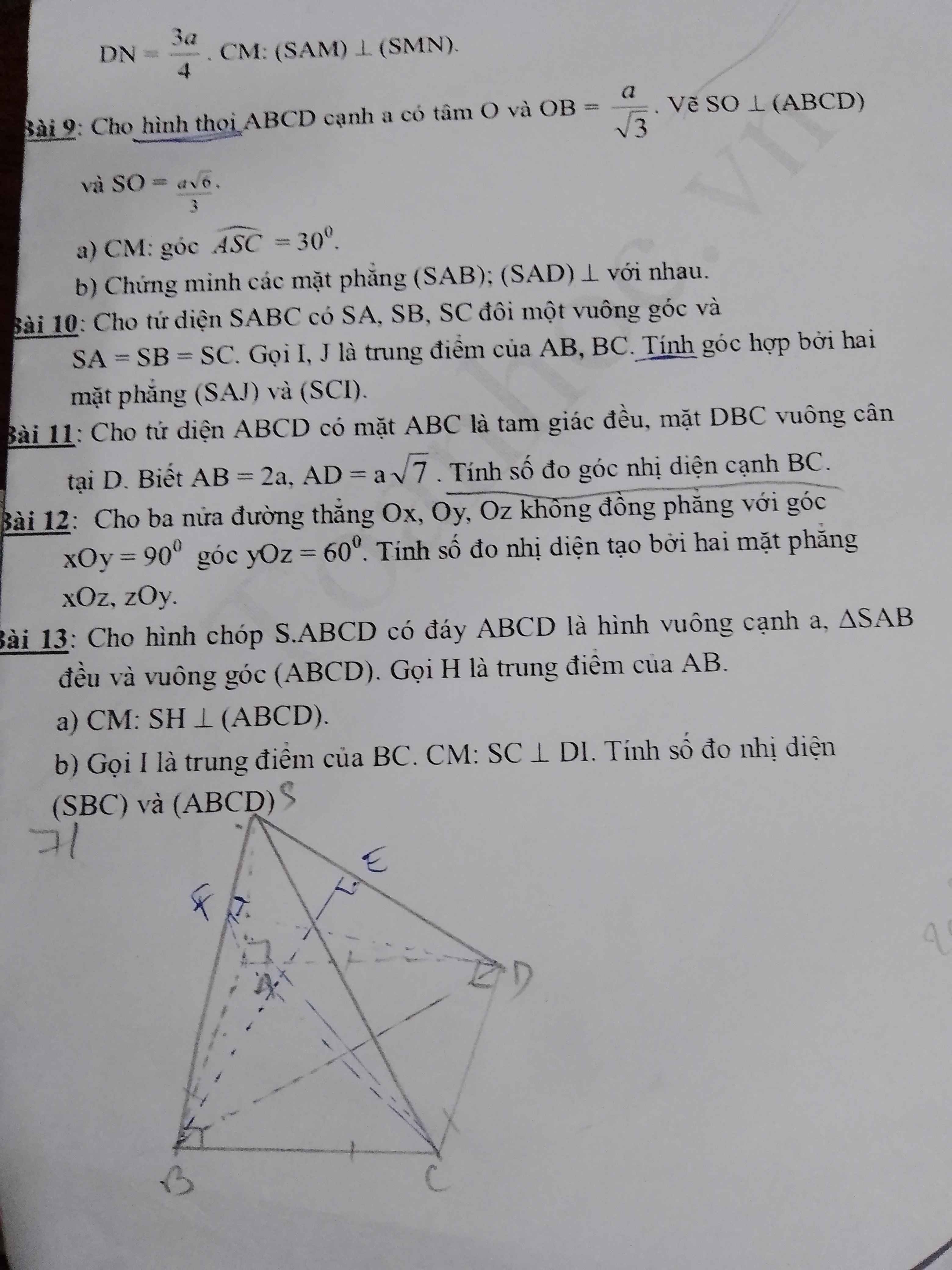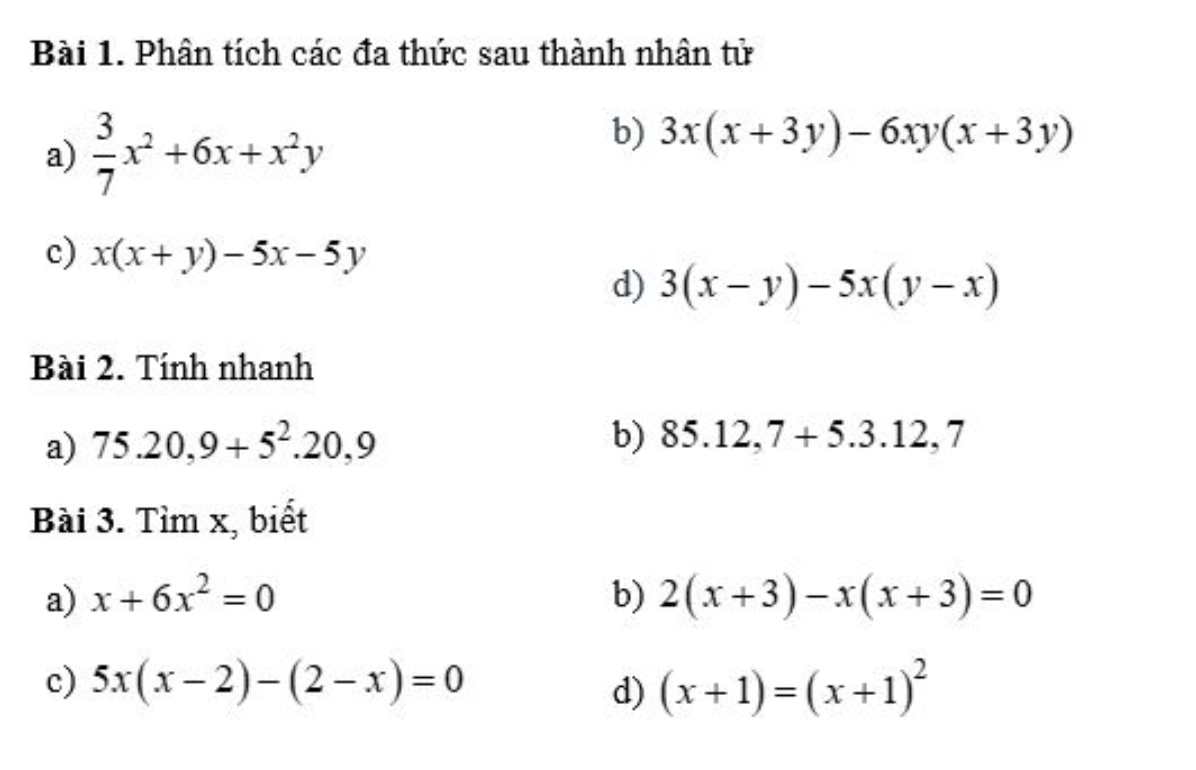Có ai có các câu họi tự luận bài 44 sinh 9 và bài 47 ko ạ cho em xin với ạ.Em cảm ơn ạ!!!
Hãy nhập câu hỏi của bạn vào đây, nếu là tài khoản VIP, bạn sẽ được ưu tiên trả lời.


Độ dài đường chéo ngắn là:
\(\dfrac{7}{8}-\dfrac{1}{4}=\dfrac{7}{8}-\dfrac{2}{8}=\dfrac{5}{8}\left(m\right)\)
Diện tích hình thoi là:
\(\dfrac{7}{8}\times\dfrac{5}{8}:2=\dfrac{35}{128}\left(m^2\right)\)

Bài 7:
a: \(A=x+\sqrt{x}\ge0\forall x\)
Dấu '=' xảy ra khi x=0

a: Xét (O) có
MA là tiếp tuyến
MB là tiếp tuyến
Do đó: MA=MB
hay M nằm trên đường trung trực của AB(1)
Ta có: OA=OB
nên O nằm trên đường trung trực của AB(2)
Từ (1) và (2) suy ra OM⊥AB

13 . b ) SH \(\perp\left(ABCD\right)\Rightarrow SH\perp DI\) .
Dễ dàng c/m : DI \(\perp HC\) . Suy ra : \(DI\perp\left(SHC\right)\Rightarrow DI\perp SC\) ( đpcm )
Thấy : \(\left(SBC\right)\cap\left(ABCD\right)=BC\)
C/m : SB \(\perp BC\) . Thật vậy : \(BC\perp AB;BC\perp SH\Rightarrow BC\perp\left(SAB\right)\Rightarrow BC\perp SB\)
Có : \(AB\perp BC\) nên : \(\left(\left(SBC\right);\left(ABCD\right)\right)=\left(SB;AB\right)=\widehat{SBA}=60^o\)

@Nguyễn Thị Thương Haoif em cảm ơn cô ạ.
Các bạn ở CLB em cũng làm thế ạ.
Vâng Ihi
Lời giải:
Các phân số bằng $\frac{3}{4}$ mà mẫu có 2 chữ số là:
$\frac{3\times 3}{4\times 3}=\frac{9}{12}$
$\frac{3\times 4}{4\times 4}=\frac{12}{16}$
$\frac{3\times 5}{4\times 5}=\frac{15}{20}$
.....
$\frac{3\times 25}{4\times 24}=\frac{75}{96}$
(đến đây là hết vì 4 x 25 = 100 bắt đầu có 3 chữ số
Vậy ta nhân cả tử và mẫu với lần lượt các số từ 3 đến 24 (có 22 số) nên tương ứng có 22 phân số thỏa mãn.

b)\(3x\left(x+3y\right)-6xy\left(x+3y\right)\)
\(=\left(3x-6xy\right)\left(x+3y\right)\)
c)\(x\left(x+y\right)-5x-5y\)
\(=x\left(x+y\right)-5\left(x+y\right)\)
\(=\left(x-5\right)\left(x+y\right)\)
Bài 1:
b. \(3x\left(x+3y\right)-6xy\left(x+3y\right)\)
= (3x - 6xy)(x + 3y)
= 3x(1 - 2y)(x + 3y)
c. \(x\left(x+y\right)-5x-5y\)
= x(x + y) - 5(x + y)
= (x - 5)(x + y)
d. \(3\left(x-y\right)-5x\left(y-x\right)\)
= 3(x - y) + 5x(x - y)
= (3 + 5x)(x - y)
Bài 3:
a. x + 6x2 = 0
<=> x(1 + 6x) = 0
<=> \(\left[{}\begin{matrix}x=0\\1+6x=0\end{matrix}\right.\Leftrightarrow\left[{}\begin{matrix}x=0\\x=\dfrac{-1}{6}\end{matrix}\right.\)
b. 2(x + 3) - x(x + 3) = 0
<=> (2 - x)(x + 3) = 0
<=> \(\left[{}\begin{matrix}2-x=0\\x+3=0\end{matrix}\right.\Leftrightarrow\left[{}\begin{matrix}x=2\\x=-3\end{matrix}\right.\)
c. 5x(x - 2) - (2 - x) = 0
<=> 5x(x - 2) + (x - 2) = 0
<=> (5x + 1)(x - 2) = 0
<=> \(\left[{}\begin{matrix}5x+1=0\\x-2=0\end{matrix}\right.\Leftrightarrow\left[{}\begin{matrix}x=\dfrac{-1}{5}\\x=2\end{matrix}\right.\)
d. (x + 1) = (x + 1)2
<=> (x + 1) - (x + 1)2 = 0
<=> (1 - x - 1)(x + 1) = 0
<=> -x(x + 1) = 0
<=> \(\left[{}\begin{matrix}-x=0\\x+1=0\end{matrix}\right.\Leftrightarrow\left[{}\begin{matrix}x=0\\x=-1\end{matrix}\right.\)




